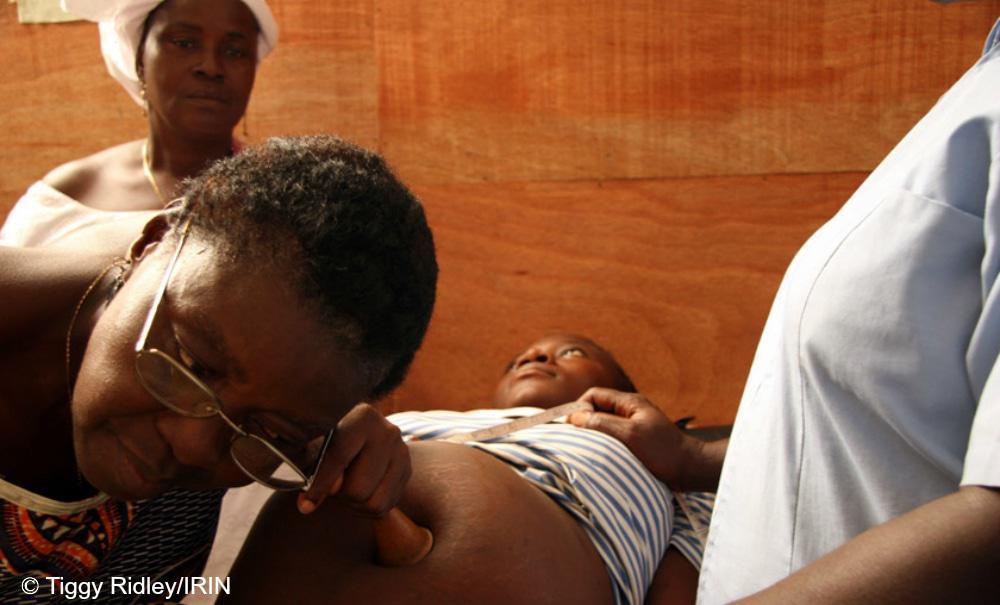Country charts first decline in maternal mortality


Recently, an international teams of researchers released maternal mortality estimates for 188 countries, including South Africa, in the international medical journal, The Lancet.
Led by the US University of Washington, the research estimated that about 2,000 mothers in South Africa die annually due to pregnancy or childbirth-related complications.
This figure is about 30 percent higher than the most recent mortality rates cited by the Health Systems Trust’s annual District Health Barometer, which charts health outcomes among districts nationwide.
“South Africa’s progress in reducing maternal mortality is impressive, but too many mothers are still dying,” said one of the lead authors Tom Achoki from the University of Washington’s Institute for Health Metrics and Evaluation. “We know what works to save mothers’ lives and must continue to do more.”
SA likely turning a corner
However, Dr Rosie Burton, an infectious diseases specialist at Khayeltisha District Hospital, cautions that newly released maternal mortality rates are based largely on mathematical modelling and may not be as accurate as South Africa’s most authoritative source on these types of deaths.
[quote float=”right”]”TB is a major underlying cause of of death and probably accounts for about half of all deaths from non-pregnancy-related infections”
Released about every three years since 1998, the Confidential Enquiries into Maternal Deaths in South Africa reports track deaths among pregnant women and new mothers that occur in health facilities.
Although some deaths still go unreported, the latest interim 2011 report figures finally show a reduction in these kinds of deaths after HIV led to dramatic increases in maternal mortality in the 1990s.
According to Burton, the latest figures show 13 percent reduction in maternal deaths and an 18 percent reduction these types of deaths among HIV-positive expecting and new mothers. The latest interim report also shows a 28 percent drop in deaths due to infections like HIV.
“For the first time, maternal mortality seems to be going down which seems to be driven by a reduction in HIV-related deaths,” Burton told Health-e. “While one year does not make a trend, people are feeling that this is very likely to be a significant trend rather an a anomalous year.”
Achoki’s team also found that South Africa had managed to reduce maternal deaths by about seven percent in the last decade, charting a similar reduction in deaths among young children.
TB may be the new threat to mothers
HIV has largely driven South Africa’s high death rates among mothers and Burton notes that South Africa’s first reduction in maternal deaths in almost two decades coincides with increased and easier HIV treatment access for pregnant women.
Pregnant, HIV-positive women are now entitled to receive antiretrovirals (ARVs) at their first antenatal clinic visit in order to prevent transmitting the virus to their babies. Only the Western Cape has moved to allow women started on ARVs in this way to continue lifelong ARVs regardless of whether they are sick enough to need them.
While HIV-related deaths among pregnant and new moms are down, Barton said she suspected tuberculosis (TB) is a rising cause of death among these women.
“TB is a major underlying cause of of death and probably accounts for about half of all deaths from non-pregnancy-related infections, which are responsible for about 20 percent of maternal deaths,” she said. “It’s now recommended that women are screened for TB every time they go to the antenatal clinic.” – Health-e News Service.
Author
Republish this article
This work is licensed under a Creative Commons Attribution-NoDerivatives 4.0 International License.
Unless otherwise noted, you can republish our articles for free under a Creative Commons license. Here’s what you need to know:
You have to credit Health-e News. In the byline, we prefer “Author Name, Publication.” At the top of the text of your story, include a line that reads: “This story was originally published by Health-e News.” You must link the word “Health-e News” to the original URL of the story.
You must include all of the links from our story, including our newsletter sign up link.
If you use canonical metadata, please use the Health-e News URL. For more information about canonical metadata, click here.
You can’t edit our material, except to reflect relative changes in time, location and editorial style. (For example, “yesterday” can be changed to “last week”)
You have no rights to sell, license, syndicate, or otherwise represent yourself as the authorized owner of our material to any third parties. This means that you cannot actively publish or submit our work for syndication to third party platforms or apps like Apple News or Google News. Health-e News understands that publishers cannot fully control when certain third parties automatically summarise or crawl content from publishers’ own sites.
You can’t republish our material wholesale, or automatically; you need to select stories to be republished individually.
If you share republished stories on social media, we’d appreciate being tagged in your posts. You can find us on Twitter @HealthENews, Instagram @healthenews, and Facebook Health-e News Service.
You can grab HTML code for our stories easily. Click on the Creative Commons logo on our stories. You’ll find it with the other share buttons.
If you have any other questions, contact info@health-e.org.za.
Country charts first decline in maternal mortality
by lauralopez, Health-e News
May 7, 2014



